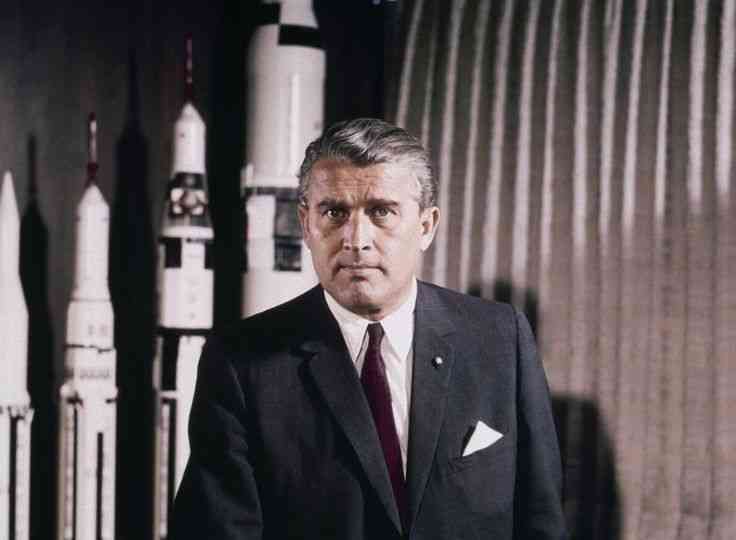Wernher von Braun, a German-American aerospace engineer, is a pioneer in the development of missile technology in Germany and the father of missile and space science in the United States.
Werner Magnus Maximilian Fryer von Braun, a German-American scientist, was a world leader in missile science. As a young man, he became a member of the Nazi Party and worked on its missile development program. He was one of the leaders in the development of the famous V-2 missile.
After the end of World War II, the Americans secretly took von Brown to the United States with 1,600 other German engineers, technicians, and scientists. The project for which these scientists were selected was called Operation Paperclip. Von Brown worked on the development of a medium-range ballistic missile for the US military, and the missile developed the first American spacecraft, the Explorer 1 . The group, which Brown was tasked with managing, operated at the Marshall Space Flight Center. In addition to the above, he was also involved in the design and development of the Saturn V missile team . The missile sent the famous Apollo spacecraft to the moon.
Birth and education
Wernher von Braun was born on March 23, 1912, in the small town of Virtues, in the province of Poznan, part of the German Empire. He was the second of three children in an aristocratic family. From the beginning of his birth, von Braun received the title of Fryer, which was equivalent to Baron in Germany. German aristocratic laws and permits were repealed in 1919; But these families were still allowed to use their titles.
Werner's father, Magnus Fryer von Braun, served as agriculture minister for the federal government during the Weimar Republic. The Weimar Republic was the German system of government between 1919 and 1933. This title is given by historians to the period after the end of World War I until the rise of the Nazis.
Von Brown became interested in space science when he received a telescope as a gift
Von Braun had an older brother, Sigismund, who served as Secretary of State in the 1970s. The younger brother was Magnus, a rocket scientist who was later hired as Chrysler's manager .
As a child, Werner received a telescope from his mother as a gift, and this gift made him interested in space science. Their families immigrated to Berlin in 1915 to work as interior ministers. At the age of 12, Werner was fascinated by record-breaking activities such as Max Waller and Fritz von Oppel, who used record-breaking missiles to break records. Because of this interest, he attached a firecracker to a toy car and conducted a dangerous experiment on a busy street. The experiment led to Werner's arrest by police and his detention until his father signed a commitment.
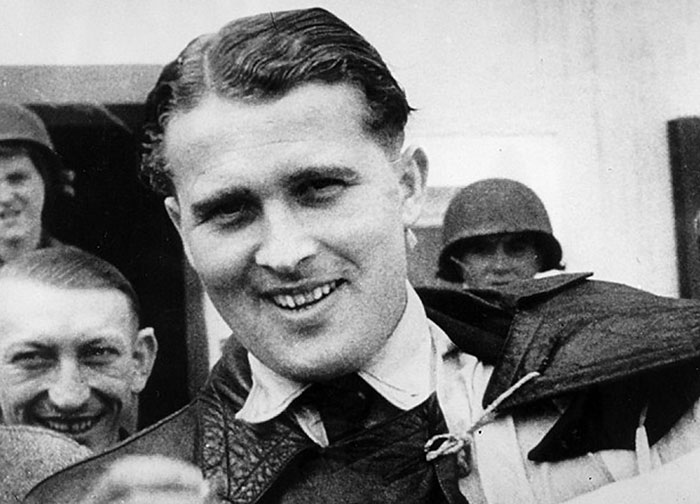
Werner was also an amateur musician who learned to play the piano and solo as a child. He memorized the pieces of Beethoven and Bach and had a great talent for playing. One of the scientist's childhood interests was to become a musician. Of course, in 1925 he went to a boarding school and his interest changed.
Von Braun was poor during his studies in physics and mathematics; But he became interested in this branch of science by reading a book by Hermann Obert (one of the leading theorists in space science). The book's title, which changed Werner's interest, was "Journey to Planetary Space with Missile." In 1928, Werner's parents sent him to Hermann Litz School on the island of Spicrug. Werner's interest in space science and missiles led him to continue his studies in the fields of physics and mathematics.
The father of missile science entered the Technical University of Berlin in 1930 , where he became a member of the University's Space Travel Association. As a student, he worked on a liquid rocket engine project with Willie Lee and Hermann Obert. In the spring of 1932, he graduated from the Technical University with a degree in Mechanical Engineering.
Von Braun saw Hermann Obert as the main source of inspiration for the study of space science
After his early education in missile science, von Braun concluded that progress in these sciences required more than just current knowledge. For this reason, he went to the Humboldt University of Berlin for postgraduate studies and in 1934 he graduated with a doctorate in physics. In addition to his undergraduate studies, he completed a semester at the Federal Institute of Technology in Zurich from June to October 1931. Although Werner researched military missiles in his final years of study , his interest in space travel remained strong.
Wernher von Braun mentions Ubert as his source of inspiration:
Hermann Obert was the first scientist to provide models, analysis, and mathematical design for spacecraft when analyzing and thinking about them. I know him not only as a guiding star, but also as the first interface for rocket science and space travel. There must be a place in history for respecting the activities and research of this scientist.
Work activity in Germany
Von Brown's education ended before World War II. This was a time when, under the Treaty of Versailles, the Germans were disarmed and did not have the right to conduct research and study in certain military fields. Therefore, Werner was only able to work on the missile that was not mentioned in the treaty.
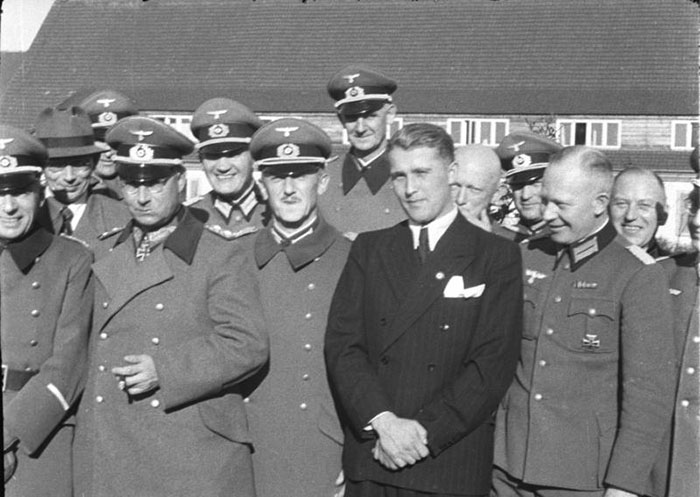
Communication with the Nazi Party
Von Braun's relationship with the Nazi Party during the reign of Reich III is historically written with contrast and ambiguity. Historians date his membership in the Nazi party to November 12, 1937. In a post-World War II confession to the Americans, von Braun cited coercion and threats against the Nazis as reasons for joining the party. He said in a statement that he had joined the group for fear of losing his job and that he had no political views behind the membership.
However, some World War II historians have published images and documents of von Braun's close connection with Nazi leaders. In part of his memoirs on his membership in the Nazi Party, he cited the group's slogans and promises to ease the post-World War I recession. He said that despite his membership in the party, many of his colleagues saw Hitler as a person with little knowledge and unwise actions, who, like Napoleon, only thought of opening up the country.
Von Braun's relationship with the Nazi party has always been ambiguous and contradictory
Historians have also confirmed von Braun's membership in the Nazi Conservative Party or the Osas. He is seen in some historical images while wearing the uniform of this military branch. Of course, von Brown also considered this membership to be formal in most cases, and considered the received degrees to be only a technical and engineering promotion; The last rank that von Braun received in the branch of administration was. Wandering.
Scientific activities in the service of the Nazi Party
The father of rocket science was researching his doctoral dissertation in 1933, when the Nazi party came to power in Germany. Immediately after coming to power, the Nazis used him for missile research. Artillery Captain Walter D دورrnberger granted von Brown a gun license. After this change of position, he worked in the state of Campersdorf with the Center for Research and Testing of Solid Fuel Missiles. The research center was managed by Dornberger.
The title of von Braun's doctoral dissertation, completed on July 27, 1934, was "Research on Combustion Tests." Of course, this title was the only appearance of this scientist's research. He actually worked on a project called "Theoretical, Experimental, and Practical Solutions to Solve the Problem of Liquid Fuel Missiles" for the Nazi Army. The results of his series of research led to the launch of two missiles up to 2.2 and 3.5 kilometers in height in 1934.

Prior to 1939, German researchers often looked at the theories and solutions of the American scientist Robert H. H. They used Godard. Von Brown was also in direct contact with the scientist to help him solve various missile problems. The results of the scientist's contributions to the development of the V-2 missile greatly helped von Brown. In 1963, a German scientist says of Godard's research:
However, the missiles designed by Godard had several drawbacks by today's standards; But the research paved the way for the development of various modern missile capabilities.
V-2 missile
On December 22, 1942, Adolf Hitler personally ordered the construction of an A-4 missile as a "weapon of revenge." The team led by von Braun was researching in the village of Pinmond. They were designed and manufactured after the decree was issued, and on July 7, 1943, von Braun showed in a video the launch of an A-4 missile aimed at London. Hitler was very pleased with this, and this honor was unforgettable for 31-year-old von Braun.
Following the rocket launch, the British and Soviet Union responded to the German attack and bombed the Pinmond Research Center on August 17 and 18 of that year. The bombing, one of the largest attacks in World War II history, was carried out using 596 aircraft and 1,800 tons of explosives. Most of the residents of the research center survived the attack; But the equipment was completely destroyed and the German missile program was postponed. In addition to the loss of equipment, a number of senior engineers from von Braun were killed in the attack.
The next rocket of the von Braun research team was this time completely military, with the propaganda propaganda "Vengeanve 2" and V-2 for short, which was fired at London on September 7, 1944. However, von Braun initially turned to rocket science because of his interest in space; But the results of his research were used to kill people. "The missile did well, but landed on the wrong planet," he said after hearing the news of a new missile strike on London. Well-known satirist Mort Sal said of von Braun's behavior: "I'm targeting the stars; "But sometimes my missiles hit London."

During World War II, in addition to missile studies, the German missile scientist conducted research on aircraft fuel that ultimately failed. He was unexpectedly arrested by Gestapo on March 14, 1944. It was later revealed that a spy had learned from the conversations of von Braun and his colleague that they had no hope of continuing the war and were interested in developing the missile. The prominent scientist was detained for two weeks without knowing the charges. After a while, scientists at the research center and some military officials asked Hitler to release von Braun to continue his research on the missile project. Despite knowing the consequences, Hitler released von Braun and said that as long as his presence was needed, the scientist would be acquitted of any charges.
The father of missile science was arrested in late World War II on charges of discouraging the Nazi army
Surrender to the US Army
In the spring of 1945, as the war approached its final months, the Soviet Army was 160 km from the Von Brown Research Center. He gathered his forces and asked them to surrender to the Americans or the Soviet army. Eventually, they decided to join the Americans. They hid the research documents somewhere so that they would not be handed over to the political group. It was during these months that the German scientist suffered a serious hand injury on a business trip.
In April, Allied forces advanced heavily into German territory. The military ordered the missile research team to go to a base in the Alps. Guards were ordered to massacre the team members as the enemy approached. Von Braun was able to convince the political forces to hide the research team in the surrounding villages and not to be an easy target for the Allies. He himself fled to Austria with his brother, where he surrendered to the Americans.
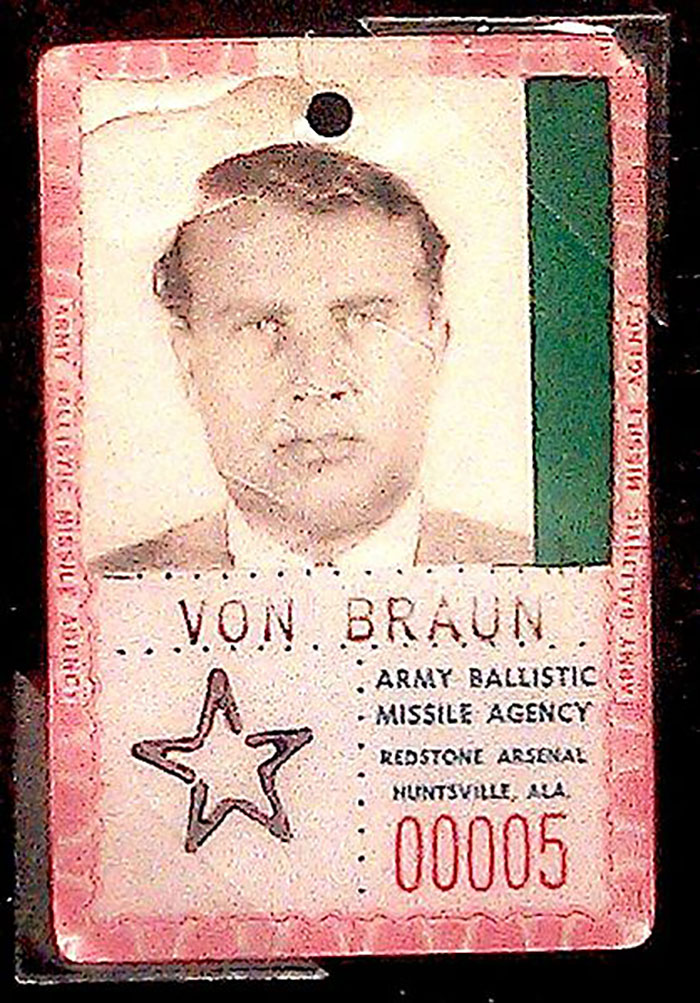
It is reported that von Braun was first handed over to the British intelligence services and interrogated by British engineers and interrogators. Their goal was to extract practical information from the number one German missile organization. The German missile scientist was then handed over to US forces and, after some time, interrogated in the Operation Paperclip series project.
Service in the United States
Von Braun was transferred to Fort Bliss, north of El Paso, after being transferred to the United States with some former members of his research team. The scientist did not feel comfortable in the new environment at all. A scientist who managed many people in his own country, he became a 26-year-old employee-manager in the United States who had a degree in ordinary engineering. Von Brown's manager did not care about his knowledge and rejected most of his requests. However, von Braun also researched the site and, in the first steps, recovered the V-2's research documents.
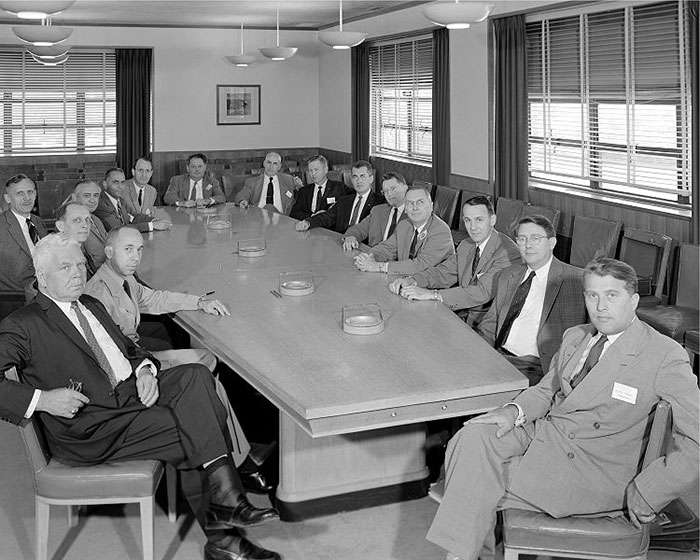
Subsequent operations by von Braun's research team in the United States included the reconstruction and optimization of a number of V-2 missiles that had been transferred from Germany to the United States. In addition, they were examining other military and civilian capabilities of these missiles. The investigation team was not allowed to leave the residence without military escort. Because of these circumstances, they chose the nickname "Prisoners of Peace" for themselves.
After the outbreak of the Korean War in 1950, von Braun's research team moved to Huntsville, Alabama, where it developed the Redstone missile. Von Brown lived in the area for 20 years. Redstone is known as the first missile to test ballistic atomic bombs. Von Brown, who later became director of research and development for the US Army's Ballistic Missile Agency, decided to optimize the Redstone missile. The optimization of the missile led to the production of the Jupiter-C missile, which launched the first American spacecraft, the Explorer One. The launch could be called the birth of the aerospace era in the United States.
The missile designed by von Braun for the Americans was the beginning of the space age in this country
Working hours in NASA
After the launch of the Sputnik missile by the Soviet Union and the escalation of the Cold War between the United States and this country, the Americans made a serious decision to advance in the field of aerospace. They used a German research team led by Werner von Braun to win the space competition with the Soviet Union. NASA entered a new phase on July 29, 1958, with the official establishment and operation of the US space agency.
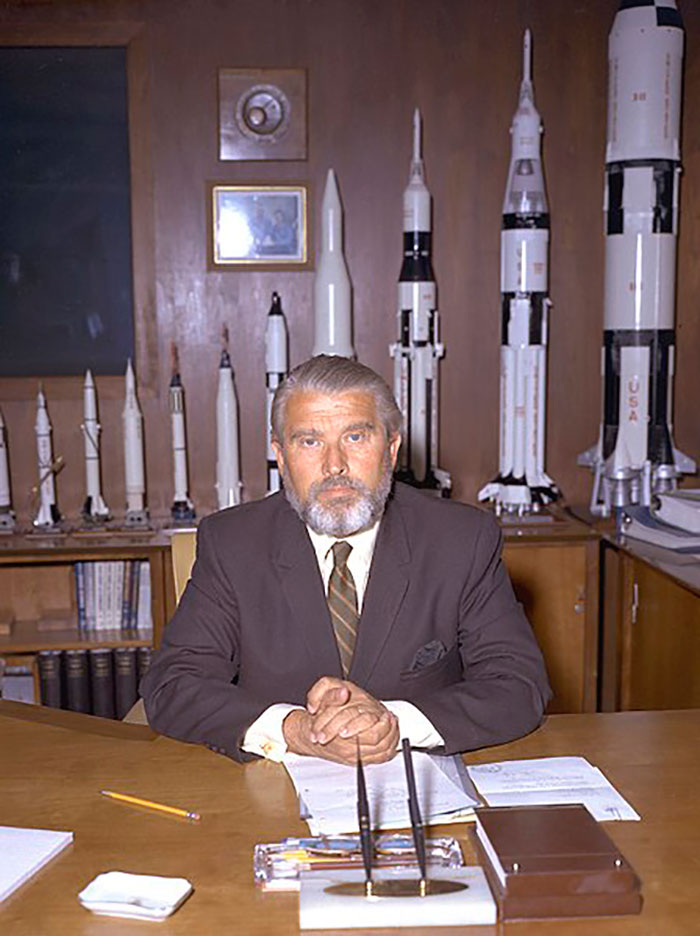
After joining NASA, the German scientist focused on his favorite subject, space travel. After a number of failed projects and failed launches, Von Brown's obsession to solve the missile's problems before the astronaut boarded it finally answered. The Apollo 11 project was successfully completed on July 16, 1969, and six astronauts were sent to Korea by the Saturn V missile.
On March 1, 1970, von Braun was promoted to managing director at NASA and moved to Washington DC. After a while, the failures of the Apollo project increased, and von Brown was not very interested in continuing it. Werner retired from NASA on May 26, 1972.
After retiring from NASA, von Braun worked as the deputy chief engineer of the Firchild space company at the German Town of Maryland. He was diagnosed with kidney cancer in 1973; But he continued to operate vigorously. His other scientific activities after retirement include teaching and lecturing at prestigious American universities. In 1975, he founded a research center called the National Space Association. Health problems prompted the rocket scientist to resign from Firchild on December 31, 1976 and pursue his treatment. In 1977, he was awarded the National Medal of Science for failing to attend a special ceremony at the White House.

Personal life and death
Werner von Braun had an attractive and social personality. He had many friends, and those around him referred to him as a man of high social power. After several unsuccessful attempts to get married, the famous scientist proposed to his cousin, Maria Lewis von Koisworth, in a letter while living in Fort Bliss. After Maria's father agreed, Werner also received permission from US officials to travel to Germany and return with his wife.

Werner and Marie were married in 1947 and returned to the United States with Werner's parents. The couple's first child, Iris Karin, was born on December 9, 1948, in Fort Belis Military Hospital. The von Braun family also had two other children, Margaret and Peter, who were born in 1952 and 1960. In 1955, von Braun received official US citizenship.
Werner von Braun died on June 17, 1977, of pancreatic cancer in Alexandria, Virginia, and was buried there.
During his career, von Braun received 12 honorary doctorates. One of the craters of the moon is named after the scientist's activities. Many German streets are also named after this famous scientist.

